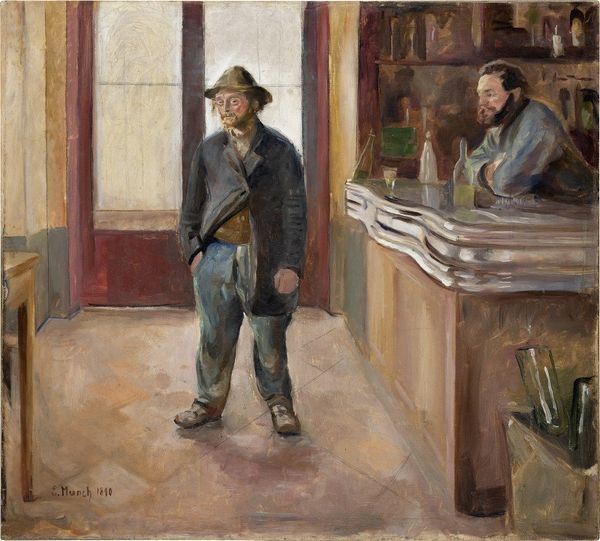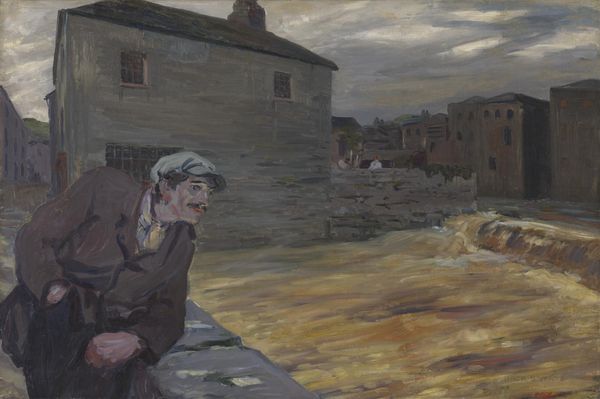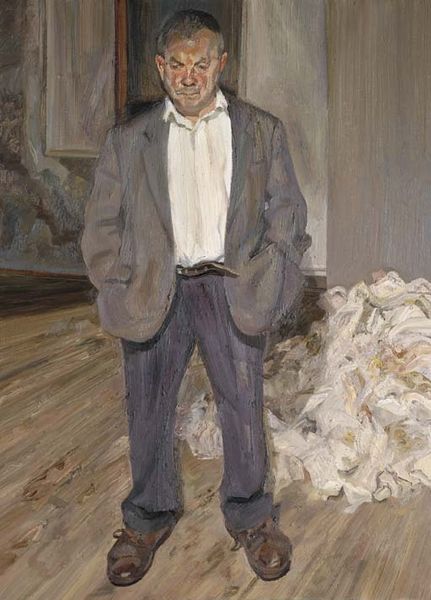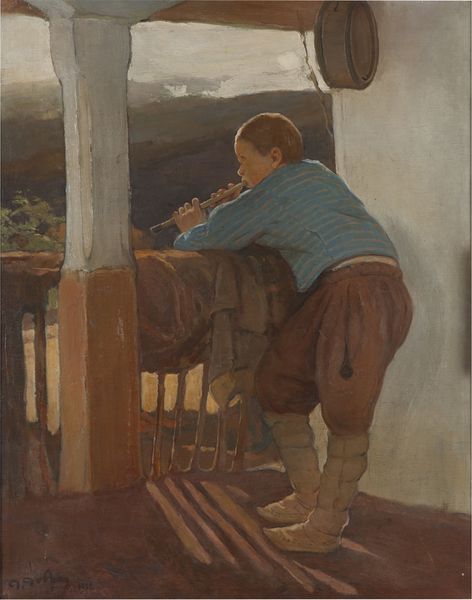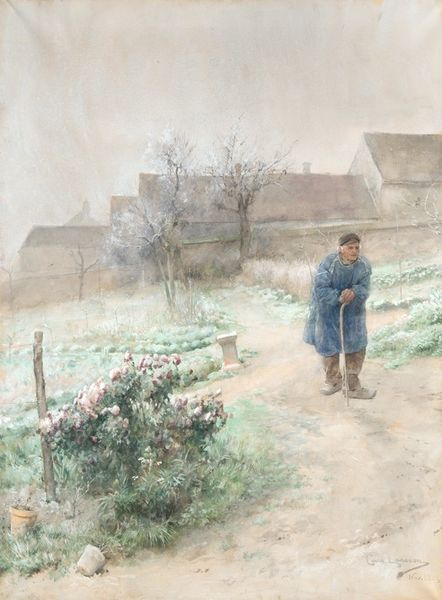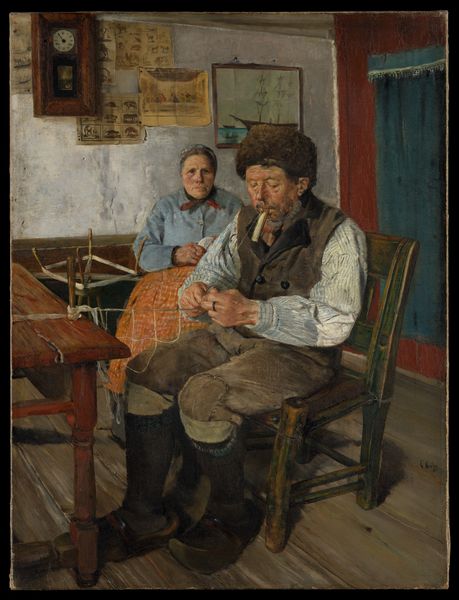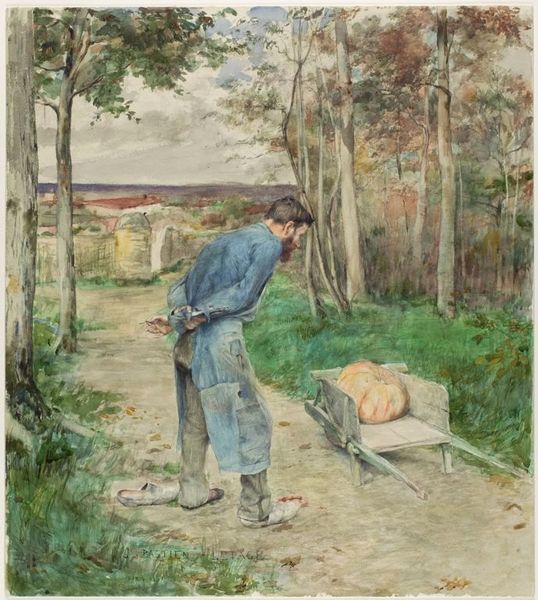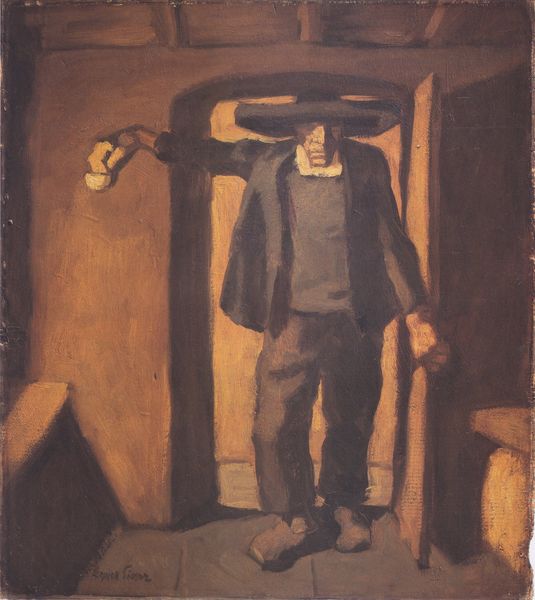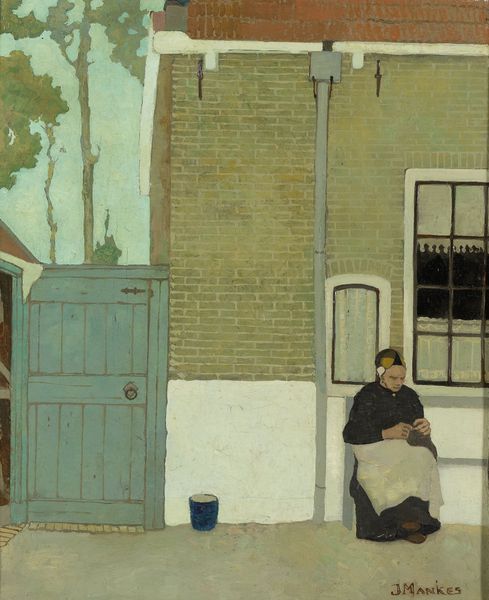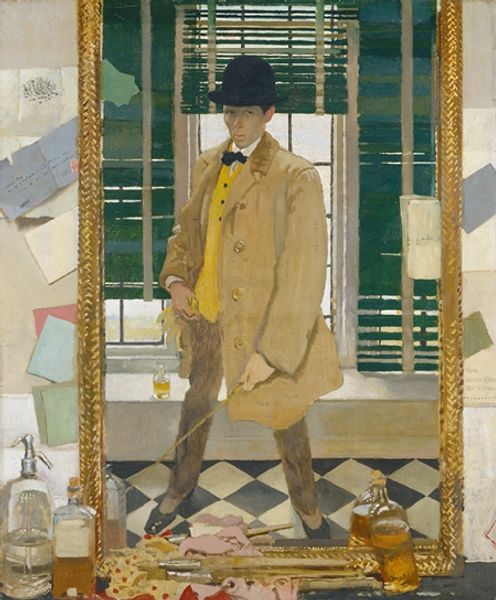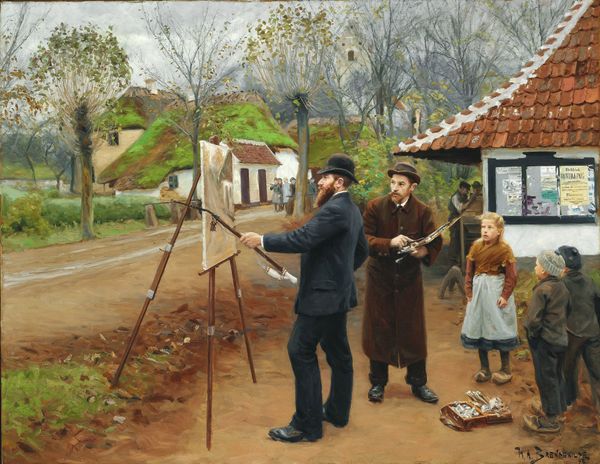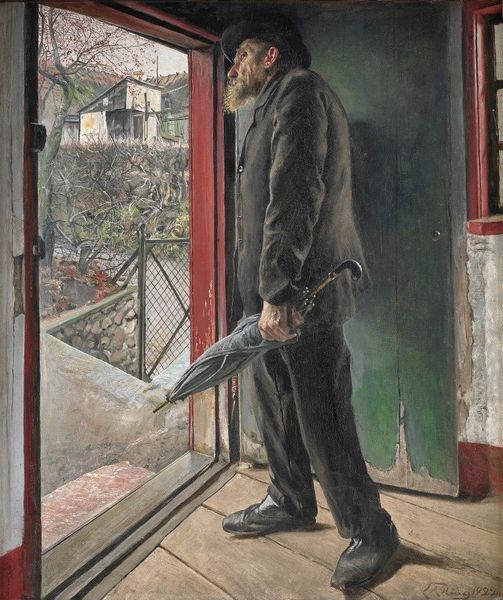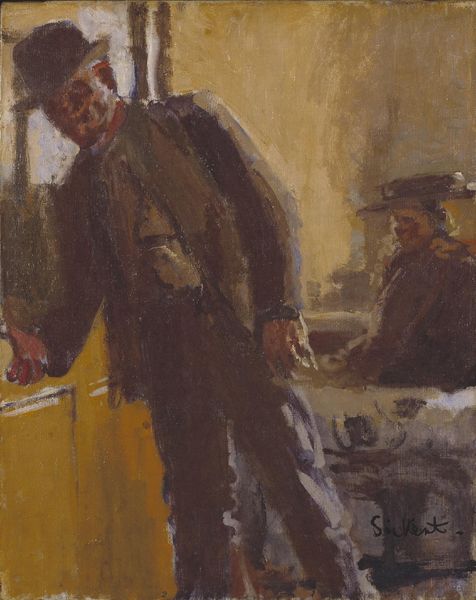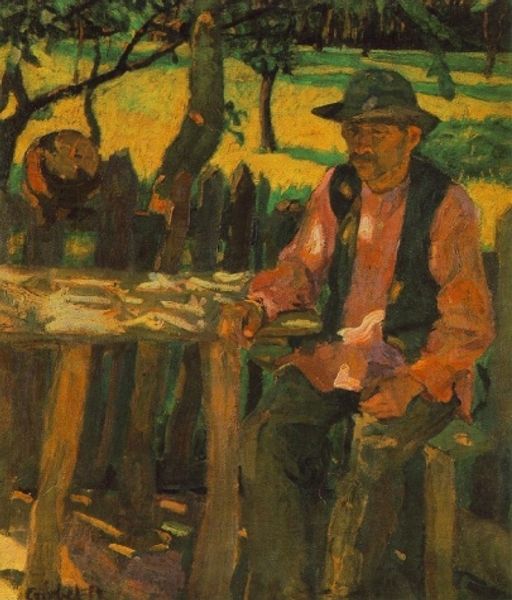
Copyright: Public Domain: Artvee
Curator: Welcome. Today we’re considering "Whitewashing the Old House," an oil on canvas painted in 1908 by the Danish artist L.A. Ring. Editor: My first impression is of labor and constraint. The stark light and shadows suggest a hardscrabble existence. Is this a portrait of a specific individual in his social milieu? Curator: The figure certainly anchors the composition, but more so it explores the dynamic interplay between light and form. Note the precise rendering of textures: the rough stonework underfoot against the smooth, whitewashed walls, for instance. Semiotically, consider the color white itself. Editor: Yes, but consider that within its cultural context. The labor isn't just labor. Who owns the land? Who benefits from his work? Who is that gazing out from the window? Is the act of whitewashing a form of covering over, or erasing? Curator: It functions compositionally to unite the foreground and background. See how the diagonal line of the wall draws our eye back to the distant houses? The palette is deliberately restrained, dominated by earth tones and muted blues. It echoes the Scandinavian landscape. Editor: Perhaps. But look closer: is that resignation on his face, or defiance? The painting may offer visual pleasure through color harmony, but let's not ignore the unspoken stories embedded within that carefully constructed surface. It’s not simply a landscape but an interaction, the relationship between people, between worker and dwelling, that becomes key. Is this idealized, or is it honest? Curator: I concede there is a subdued tension present. Still, the painting demonstrates Ring’s mastery of visual organization. Look again how the man and his shadow become vertical counterparts in a satisfying geometric configuration. Editor: The man isn't merely part of a composition. This piece highlights the ordinary; by emphasizing that which often goes unexamined it begs the questions: how do we build and who bears the cost of doing so? Curator: Thank you. It is works like this that allow us to appreciate formal ingenuity. Editor: And, more importantly, how visual representation can act as a mirror, reflecting social, political and deeply human concerns.
Comments
No comments
Be the first to comment and join the conversation on the ultimate creative platform.
